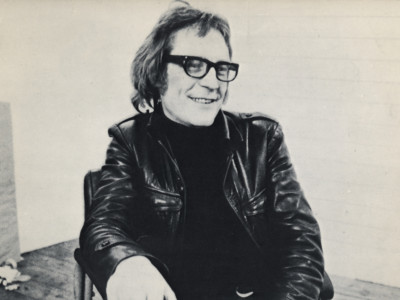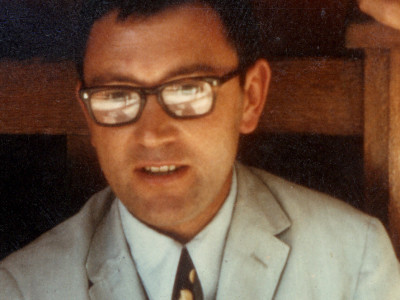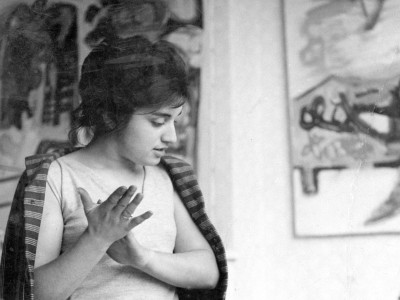
In memoriam: Michael Hopkins RA
By Nicholas Grimshaw PPRA
Published on 10 September 2023
Nicholas Grimshaw PPRA pays tribute to his friend, an architect whose innovative use of materials produced exceptional structures.
From the Autumn 2023 issue of RA Magazine, issued quarterly to Friends of the RA.
Michael Hopkins was a meticulous man. He hated fuss and decoration, for instance. He always used to say admiringly that there was nothing on a boat that was unnecessary – and that to my mind is more or less true. The fact that he loved boats and the construction of them is certainly reflected in his buildings and I know that he worked closely with his boat builder on the last vessel he made: one where all the lines led back to the cockpit so that he could sail it singlehanded if necessary.
He did this quite often, and I once sailed with him from his house to the concert hall in Aldeburgh. We tacked up the narrow, muddy river together and, on arrival, Michael nipped below and emerged in an immaculate white suit, putting his mudstained and sweaty crew to shame.
The Schlumberger Cambridge Research Centre (1985), just outside the city, is the epitome of this combination of nautical detail and stately simplicity that Michael strived for, sitting as it did like a flotilla of galleons above the flat East Anglian landscape. Among the many creative ideas that he brought to the profession was a close attention to materials, including lightweight tubular steel structures and the use of ultra large sheets of glass. What proved a real change of direction was the use of tensile structures and fabric in building, as in Cambridge. On one occasion, as an assessor for the Structural Steel Design Awards, I was visiting offices that he had designed near Heathrow – New Square at Bedfont Lakes (1992) – and someone pointed out that the building’s columns tapered. It was true: they reduced in size as they went up the building. For the Opera House at Glyndebourne (1994), the mixture of natural materials he used, including timber from the estate, amounted to a symphony.

Michael was a kind and generous man who truly believed that the person in the street could be enriched in daily life by looking at well-worked detail. He was deeply rooted in tradition and wanted his buildings to last, although he was acutely aware of wear and tear, particularly on his buildings involving fabric, which did need care and maintenance. I think he agreed with Buckminster Fuller’s famous idea that a well-loved cardboard house will last forever.
Together with his architectural partner and wife Patty, his experiments with structural gaskets and panels led to the ingenious cladding system that was Patera, which can be clearly seen in the construction in his own workplace (1984) near Marylebone station. All his architectural life he worked closely with Patty, his muse and co-creator. Here is a demonstrative case of two halves adding up to more than a whole.
Finally, I should add that Michael’s kind and generous nature extended to the whole community of the RA, and he was a regular attendee at the General Assembly. He was often to be seen talking to senior Members about art in general and very much supported the original aim of the RA, that painting, sculpture, architecture and all the other arts should rub shoulders together in creative harmony.
Nicholas Grimshaw is an architect and former President of the RA.
Related articles

In memoriam: Mick Moon RA
1 May 2024

In memoriam: Joe Tilson RA
28 January 2024

In memoriam: Sonia Lawson RA
12 September 2023